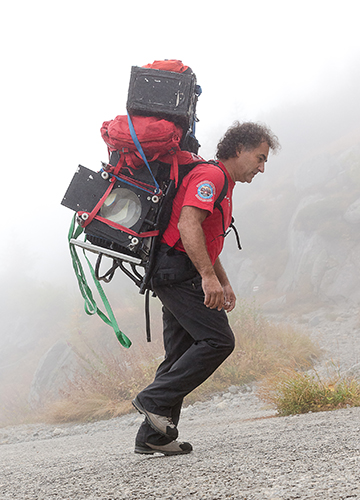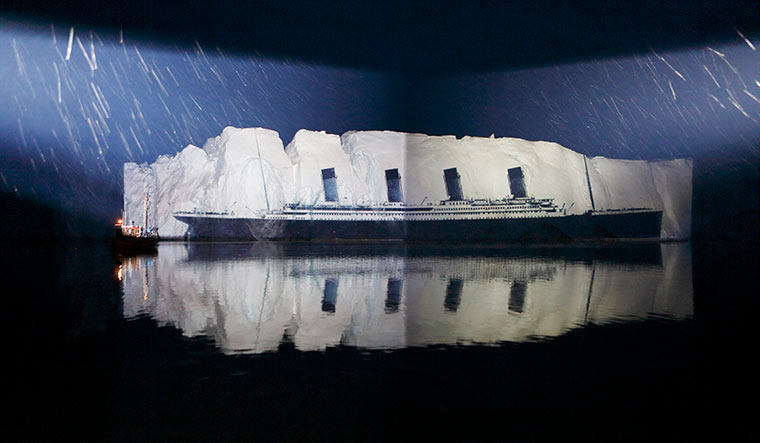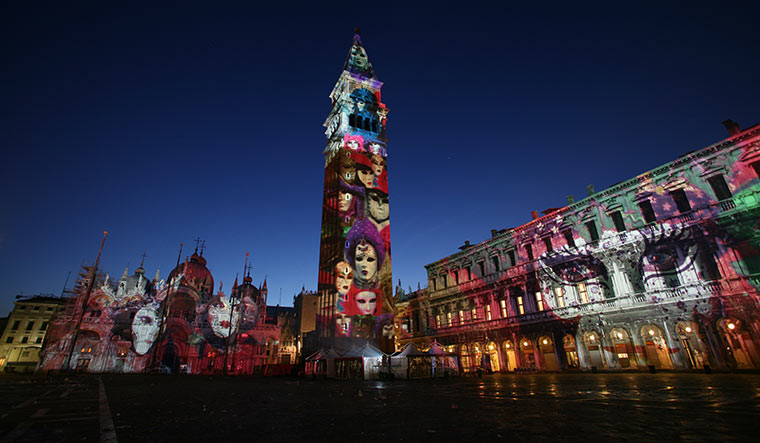Do you know that I am the fastest worker in the world?” asks Swiss light artist Gerry Hofstetter.
You shake your head, but you can anticipate an approaching punchline.
“That is because I work at light speed,” he says, and breaks into a loud guffaw. You do not expect this man with the unruly hair and solemn demeanour—who perfectly fits the stereotype of the otherworldly artist far removed from the concerns of daily life—to have a humorous side. But Hofstetter does, and it manifests at the most unexpected moments. Like when he says that he would like to see us dancing to Bollywood music when he comes to India later this month. His voice brims with enthusiasm, and it is clear that it is a much-awaited trip. Although it is for business and not just for pleasure. Hofstetter, 60, has been invited by the Swiss embassy to create light art at the grand finale of the Swiss network’s ‘Swiss It!’ initiative, as part of which 35 events were organised in 30 Indian cities in three years.
The artist says he has been wanting to visit India for many years now, ever since 2003, when he projected the Taj Mahal onto a giant iceberg at the South Pole. But he did not because he was so enthralled with the country that he was afraid he would not be able to return. “I had fallen in love with Indian films, people and culture,” he says. “It is such a fascinating country. I work with light and India is a country of great spiritual light.”
Hofstetter developed an interest in art when he was around 16. His oil paintings of horse portraits, he says, sold for $5,000 each. Much later, he would use this talent to paint the slides that would be projected onto mountains and monuments. He started doing light art to promote his own events (In 1995, he founded a marketing, event and design company), but soon began taking up commissioned projects. Often, he uses his art to convey messages, like when he illuminated the Matterhorn from several heavy-lift helicopters in 2005 to draw attention to the issue of glacial retreat in the Alps. Or when he illuminated icebergs from a Russian expedition boat in 2003 to highlight the issue of global warming. Or when he projected an image of the polar bear, which usually lives in the Arctic, onto the Antarctic at the South Pole.
His work is awe-inspiring, and a sobering reminder of how small we are in the ultimate scheme of things. Hofstetter is the alchemist who can turn light into language, and use it to tell a story. As Dr Ralf Heckner, the Swiss ambassador to India, says, what is striking about Hofstetter’s work is the unique combination of technological expertise and universal symbolism. “[His works] put a smile on people’s faces and inspire reflection,” he says. Hofstetter himself puts more emphasis on the symbolism.
“It is very easy actually,” he says about the technical part. “I project static pictures that I paint on slides. Then I need electricity, through generators mostly. And transportation—helicopters, trucks, SUVs, horses, sometimes even camels—to carry the projectors. We use high-tech cameras and state-of-the-art drones.”
The real challenge, he says, is in conceptualising the projects. “The full power of creativity is when you can get information out of the server of your life, feed it into your brain and produce an idea,” he says, giving the example of how he conceptualised the image of Queen Elizabeth II laughing and holding hands with her husband, Prince Philip, up on the clouds. As a tribute to the queen, this image lit up the night sky in Switzerland on September 17. “When the British embassy asked me to create something for the queen, I knew I did not want to do a simple portrait of hers, the kind that is common on mugs and T-shirts everywhere,” he says. “So, I imagined how the queen would be waiting to meet her husband, who would receive her on the clouds. I checked the forecast and found that in 27 hours, there would be a weather condition that would occur only once in a thousand years and last for 20 seconds— with fog, rain clouds, a little fresh snow and a full moon below the horizon of the mountains. I got to working fast and in 27 hours, I had created the work.”
Over the years, Hofstetter has collected many such experiences. Like how he created the world’s biggest artwork—a 5,200m-long tiger on the Eiger North Face of the Swiss Alps—or how he almost died in a sandstorm in Egypt, where he had gone to light up the White Desert, the pyramids of Gizeh, the Sphinx and the Egyptian National Museum. Near-death experiences, in fact, are almost an occupational hazard. Case in point: When heavy fog caused his boat to crash into a 500m-long iceberg off Greenland while he was projecting the Titanic onto it, on the 100th anniversary of its maiden voyage. He was trapped inside for hours and finally had a narrow escape through a hole in the boat, one metre above the water.
The one insight he has gained through all his adventures is the universality of the human spirit. “I have visited more than 87 countries as a light artist, a special forces captain in the mountains, a helicopter pilot and an investment banker,” he says. “What I have come to realise is that everyone on this planet has the same goal. They just want to be taken as they are, without any prejudices.” And that, ultimately, is what he wants to do: Use his light to enlighten us, not just from without, but from within as well.




